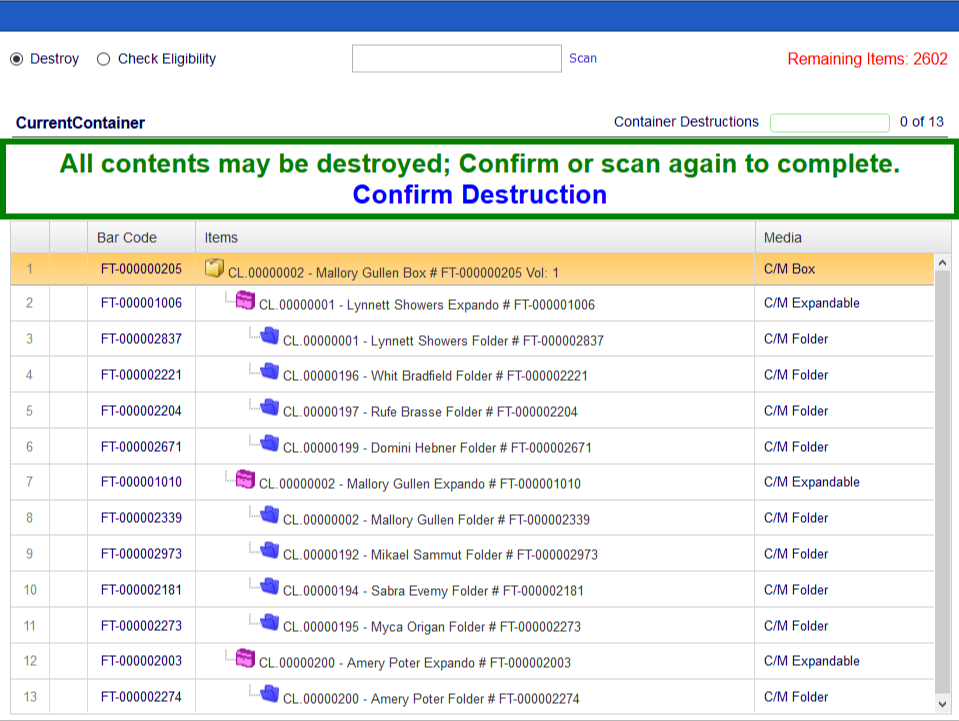In recent years, a growing number of law firms have been moving to “paperless” or paper-light systems, with electronic records regarded as the “official” record of the organization. Certainly, law firms have come a long way in reducing their usage of paper and helping to save trees — striking a positive note this Arbor Day.
But for many firms, the elephant in the room is the large volume of physical records that have accumulated over decades — extremely costly to store and difficult to manage.
Destroying (and recycling) paper files you no longer need seems like an obvious solution. But where do you even start, when there are hundreds or even thousands of boxes residing in off-site storage with contents that could require several hundred man-hours to pull, review and shred securely?
In the meantime, the cost of storing physical records is a running meter that continues to go up, up, up. Even after moving to an electronic document management system, most firms continue to add more boxes to offsite storage.
Using Technology to Manage the Destruction of Paper
The good news is that modern technology can help tackle this legacy paper problem much faster and more efficiently than you may have imagined.
FileTrail now offers end-to-end enforcement of retention policies — regardless of whether you manage your own warehouse or store records with a vendor.
The FileTrail system enables you to sort, identify and destroy client work product at the matter level — for both physical and electronic records.
You may be shocked to find out the potential cost savings. One firm we work with estimated that by destroying 43,000 boxes — starting with physical records from client matters that have been closed for ten years or more — it would save more than $114,000 per year in storage costs and recoup the cost of destruction in less than two years.
You can manage the process via our web-based interface and via our smart mobile Android app, which simplifies retrieval of physical records if you decide to handle this directly.
You also have the option to request destruction of records through your storage vendor, thanks to the close integration between FileTrail and Iron Mountain.
Destroying Records With Confidence
Many firms know they need a large-scale purge of physical records but procrastinate. Often, their hesitation is that it will take too long to go through each box to identify which files can safely be destroyed.
FileTrail is designed to help records teams destroy records with confidence. The system divides items from the folder-level to the box-level, so you can easily identify which boxes need to be pulled. With FileTrail, you can also clearly see which boxes can be destroyed in their entirety versus which boxes need to be opened and have some contents destroyed, then be repacked.
When you scan a box, the Scan to Destroy feature provides immediate and clear instructions, with color-coded responses that make it easy to see whether or not the entire box can be destroyed. If not, it displays a list of contents that can be destroyed.

You only need to scan the barcode twice to confirm destruction — no need to use the keyboard or mouse. The barcode-driven nature of this tool cuts time spent on destroying records in half, contributing significantly to overall cost savings.
All actions taken are validated and automatically logged in an audit trail for future reference. In addition, FileTrail enables you to forecast more accurately when and how many boxes you’ll be destroying based on retention schedules, so you can better manage storage utilization and budget for destruction-related costs.
The good news is that you can manage this process on-screen without having to print out long lists of records — thus avoiding the use of more paper. (Although if you need to print for any reason, you can.)
This Arbor Day, we encourage all law firms to reflect on the state of their paper-based archives and in reducing the total volume of paper generated in the future.
Join us in moving beyond paper to take a more comprehensive, modern approach to records retention and disposition — and reduce costs and risks for the firm.
NEXT TIME ON FILETRAIL BLOG: “Facing up to electronic disposition: Is automation the answer?”




